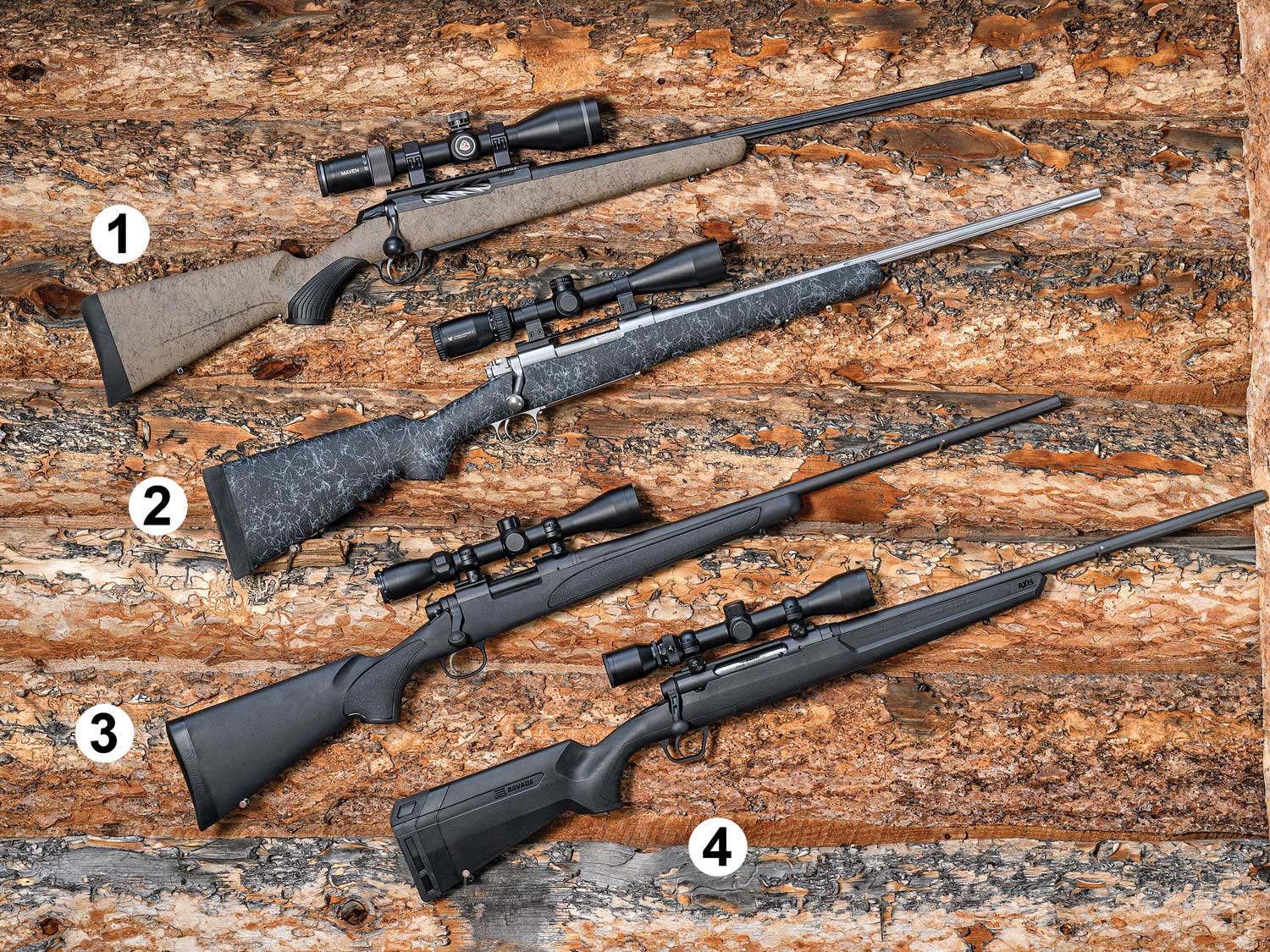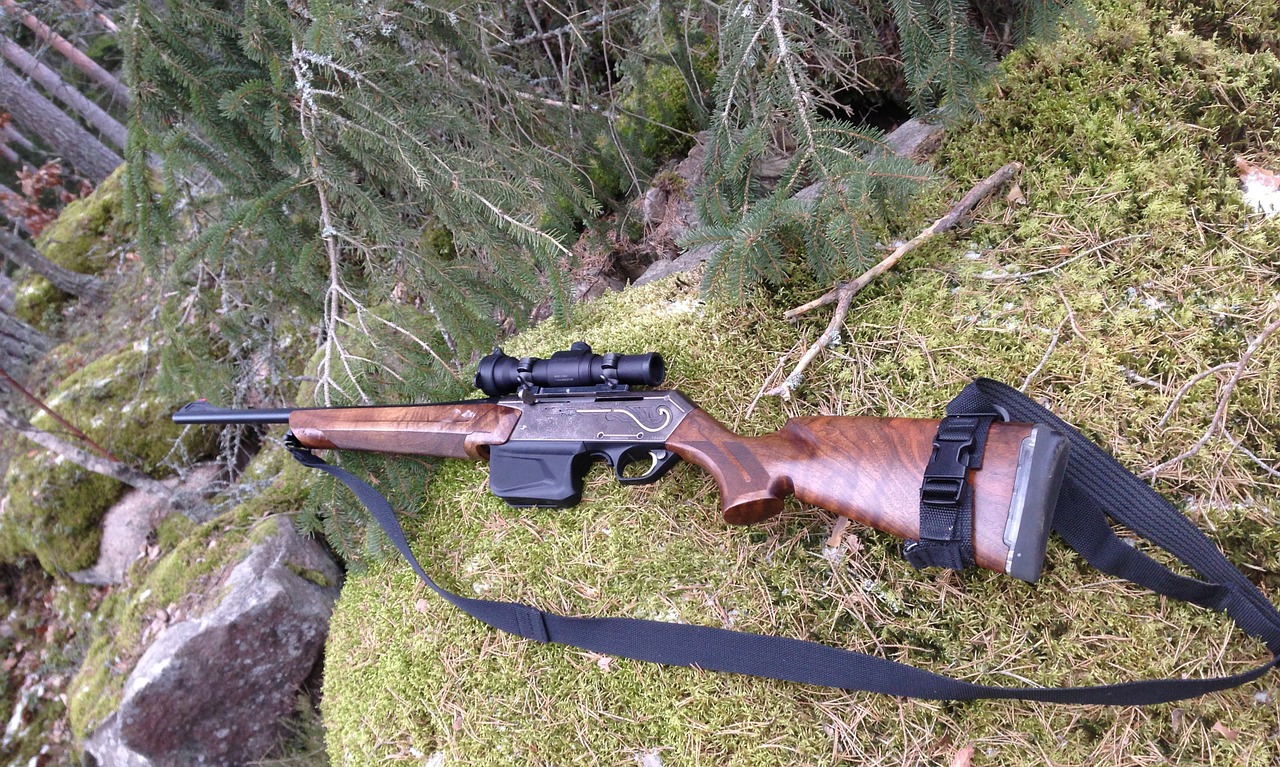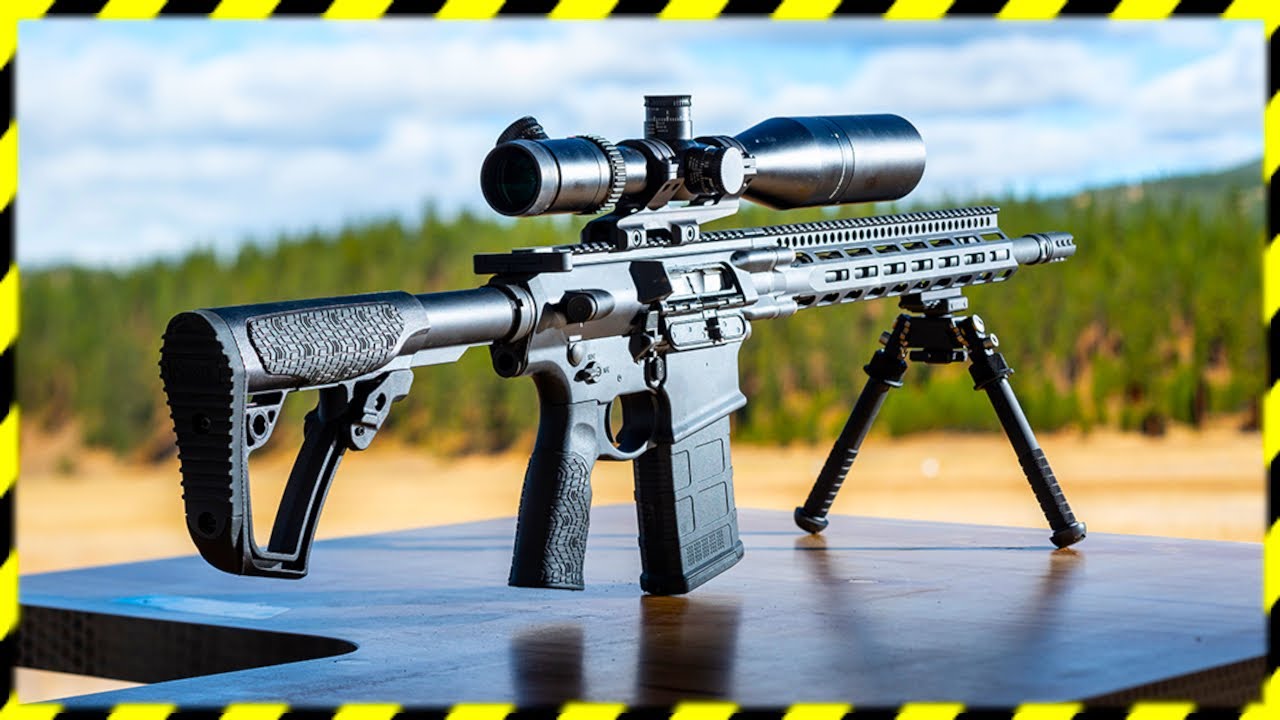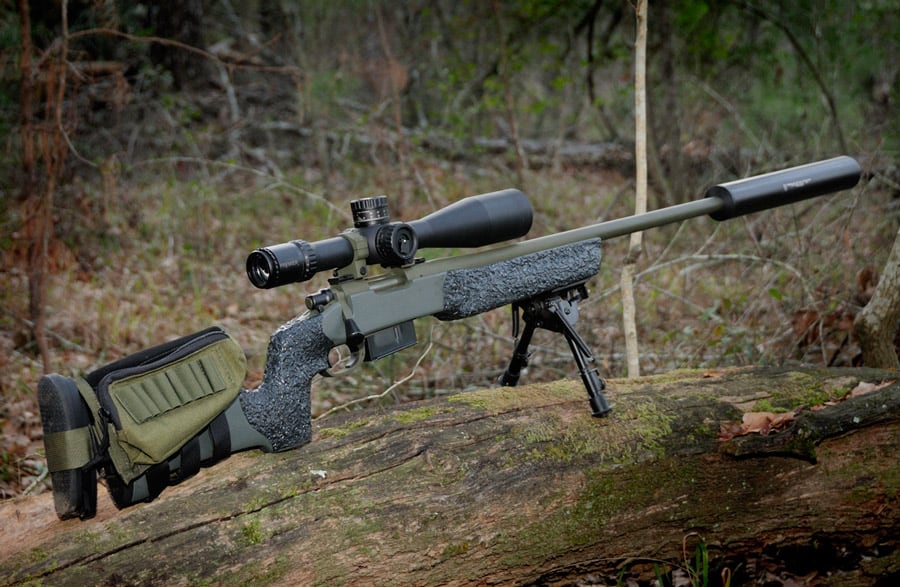Best rifle to hunt deer and elk – When it comes to hunting deer and elk, choosing the right rifle is crucial for success. In this comprehensive guide, we’ll delve into the essential characteristics, caliber selection, action types, and other factors to consider when selecting the perfect rifle for your next hunting adventure.
Whether you’re a seasoned hunter or just starting out, this guide will provide you with the knowledge and insights you need to make an informed decision.
Rifle Characteristics
Rifles suitable for hunting deer and elk must meet specific requirements to ensure accuracy, range, and handling. Key characteristics to consider include caliber, barrel length, action type, and stock design.
The caliber determines the size and power of the bullet fired, influencing both accuracy and range. For deer hunting, calibers such as .270 Winchester, .30-06 Springfield, and .308 Winchester are popular choices. For elk hunting, larger calibers like .300 Winchester Magnum, .338 Winchester Magnum, and .375 H&H Magnum are often preferred.
Barrel Length
Barrel length impacts accuracy, velocity, and handling. Longer barrels generally provide greater accuracy and velocity but can make the rifle less maneuverable in dense terrain. Shorter barrels are more compact and easier to handle but may compromise accuracy and range.
Action Type
Action type refers to the mechanism that loads, fires, and ejects cartridges. Bolt-action rifles are known for their accuracy and reliability, while semi-automatic rifles offer faster follow-up shots. Lever-action rifles are popular for their quick handling and compact design.
Stock Design
Stock design affects comfort, accuracy, and handling. The stock should fit the shooter’s body and provide a stable platform for shooting. Features such as adjustable length of pull, cheek risers, and recoil pads can enhance comfort and accuracy.
Caliber Selection

Choosing the optimal caliber for hunting deer and elk requires careful consideration of factors like energy, trajectory, and recoil. Different calibers offer varying degrees of effectiveness depending on the species and hunting conditions.
Caliber Comparison
The following table compares popular calibers for deer and elk hunting, highlighting their key characteristics:
| Caliber | Energy (ft-lbs) | Trajectory (in @ 200 yards) | Recoil (ft-lbs) |
|---|---|---|---|
| .243 Winchester | 1,800 | -3.5 | 8 |
| .270 Winchester | 2,400 | -5.0 | 10 |
| .30-06 Springfield | 2,700 | -6.0 | 12 |
| .300 Winchester Magnum | 3,000 | -7.0 | 15 |
| .338 Winchester Magnum | 3,400 | -8.0 | 18 |
For deer hunting, calibers like .243 Winchester and .270 Winchester offer sufficient energy and trajectory for ethical shots. For elk hunting, larger calibers like .30-06 Springfield, .300 Winchester Magnum, or .338 Winchester Magnum provide the necessary power and penetration.
Action Types

Action types in hunting rifles refer to the mechanism used to load, fire, and eject cartridges. The choice of action type impacts factors such as reliability, speed, and ease of use.
Bolt-Action Rifles
- Pros:
- Highly reliable and durable
- Accurate due to a strong and rigid action
- Manual operation allows for controlled and precise shots
- Cons:
- Slower rate of fire compared to semi-automatic rifles
- Requires manual cycling of the bolt after each shot
Semi-Automatic Rifles
- Pros:
- Faster rate of fire, allowing for multiple shots in quick succession
- Automatic cycling of the action after each shot, reducing manual effort
- Cons:
- Can be less reliable than bolt-action rifles, especially in harsh conditions
- May be less accurate due to the moving parts involved in the action
- Higher recoil can affect accuracy and shooter comfort
Lever-Action Rifles
- Pros:
- Fast and smooth cycling of the action
- Compact and easy to handle, especially in dense brush
- Can be reliable in various conditions
- Cons:
- Limited magazine capacity compared to bolt-action or semi-automatic rifles
- May be less accurate than bolt-action rifles due to the lighter action
| Action Type | Reliability | Speed | Ease of Use | Accuracy |
|---|---|---|---|---|
| Bolt-Action | High | Low | Moderate | High |
| Semi-Automatic | Moderate | High | Easy | Moderate |
| Lever-Action | Moderate | Moderate | Easy | Moderate |
Barrel Length and Profile
The barrel is a crucial component that significantly impacts the accuracy, velocity, and handling characteristics of a rifle. Its length and profile play a vital role in determining the rifle’s overall performance.
Barrel Length
Longer barrels generally provide better accuracy and higher velocities. This is because the longer the barrel, the more time the bullet spends accelerating before it exits the muzzle. However, longer barrels also make the rifle heavier and less maneuverable.
For deer hunting, barrel lengths between 20 and 24 inches are common. These lengths provide a good balance of accuracy, velocity, and handling.
For elk hunting, barrel lengths between 24 and 26 inches are more common. The longer barrels provide the extra velocity needed to take down larger animals at longer ranges.
Barrel Profile
Barrel profiles refer to the shape and thickness of the barrel. Different profiles offer advantages and disadvantages depending on the intended use of the rifle.
Sporter Barrel
Sporter barrels are the most common type of barrel profile. They are relatively thin and lightweight, making them easy to carry and maneuver. However, they can heat up more quickly than heavier barrels.
Heavy Barrel
Heavy barrels are thicker and heavier than sporter barrels. They dissipate heat more effectively, allowing for more sustained shooting without accuracy degradation. However, they are also heavier and more difficult to maneuver.
Fluted Barrel
Fluted barrels have longitudinal grooves cut into the surface. These grooves reduce weight while maintaining rigidity. Fluted barrels offer the advantages of both sporter and heavy barrels, making them a good choice for rifles that will be used for both hunting and target shooting.
| Barrel Length | Accuracy | Velocity | Handling |
|---|---|---|---|
| 20-24 inches | Good | Moderate | Good |
| 24-26 inches | Excellent | High | Fair |
Stock Design and Ergonomics
Stock design and ergonomics play a pivotal role in the overall shooting experience, contributing significantly to comfort, accuracy, and handling. A well-designed stock optimizes the rifle’s fit to the shooter, promoting a natural and comfortable shooting position. It ensures proper eye alignment with the scope, reduces fatigue, and enhances control during recoil.
Stock Materials
Stocks are typically crafted from various materials, each offering unique advantages. Wood stocks, renowned for their classic aesthetics and durability, provide a warm and natural feel. Synthetic stocks, on the other hand, are lightweight, weather-resistant, and offer customizable features such as adjustable length of pull and cheek risers.
Laminated stocks combine the strength of wood with the stability of synthetic materials, resulting in a durable and visually appealing option.
If you’re a hunter who’s looking for the best rifle to hunt deer and elk, you’ll want to consider the .300 Winchester Magnum. This cartridge is a great all-around choice for big game hunting, and it’s especially well-suited for hunting in thick cover.
The .300 Winchester Magnum is also a good choice for hunting big sitka blacktail deer , which are known for their toughness and size. With its powerful cartridge and accurate射击, the .300 Winchester Magnum is a great choice for any hunter who wants to take down big game.
Optics and Accessories: Best Rifle To Hunt Deer And Elk
Optics and accessories play a crucial role in enhancing the success of deer and elk hunting. Selecting the right scope or sight, as well as ensuring proper mounting, is essential for accurate shooting and effective hunting.
Optics Selection
When choosing a scope or sight for deer and elk hunting, several factors should be considered:
- Magnification:Magnification allows you to zoom in on your target, making it easier to identify and aim accurately. For deer hunting, a magnification range of 3-9x is typically sufficient, while for elk hunting, a higher magnification of 4-12x or 5-15x is recommended.
- Objective Lens Size:The objective lens diameter determines the amount of light that enters the scope, affecting brightness and clarity. A larger objective lens (e.g., 50mm or 56mm) provides better light transmission and a brighter image in low-light conditions.
- Reticle:The reticle is the pattern of lines or dots in the scope’s field of view. Different reticles are designed for specific purposes, such as long-range shooting or quick target acquisition. Choose a reticle that suits your hunting style and preferences.
- Durability:Optics for hunting must be able to withstand harsh conditions, including recoil, moisture, and temperature extremes. Look for scopes that are made from durable materials and are designed to perform reliably in challenging environments.
Mounting Systems, Best rifle to hunt deer and elk
Properly mounting the scope or sight is crucial for ensuring accuracy and stability. The mounting system should be strong and secure, allowing the optic to maintain its zero even after repeated firing.
There are various types of mounting systems available, such as one-piece mounts, two-piece mounts, and cantilever mounts. Choose a mounting system that is compatible with your rifle and provides the desired height and eye relief.
Accessories
In addition to optics, various accessories can enhance your hunting experience:
- Bipod:A bipod provides a stable shooting platform, reducing recoil and improving accuracy.
- Rangefinder:A rangefinder allows you to accurately determine the distance to your target, ensuring proper bullet drop compensation.
- Sling:A sling helps carry your rifle comfortably and securely, freeing up your hands for other tasks.
- Suppressor:A suppressor reduces the noise and recoil of your rifle, making it more comfortable to shoot and reducing the chance of spooking game.
Hunting Scenarios and Applications

Selecting the appropriate rifle for deer and elk hunting depends on the specific hunting scenarios and applications. Factors like terrain, weather, and distance play a crucial role in determining the ideal rifle setup.
Understanding the hunting environment and the target species’ behavior helps hunters make informed choices about their rifle’s caliber, action type, barrel length, and stock design.
Terrain and Distance
Hunting in mountainous terrain with steep inclines and long-range shots requires a rifle with a lightweight stock, a shorter barrel, and a powerful caliber capable of delivering accurate shots at extended distances.
In contrast, hunting in dense forests with limited visibility and shorter distances favors a rifle with a heavier stock for stability, a longer barrel for increased accuracy, and a caliber suitable for close-range encounters.
Weather Conditions
Extreme weather conditions, such as rain, snow, or extreme cold, demand a rifle that is weather-resistant and reliable under adverse circumstances.
Synthetic stocks and stainless steel barrels are ideal for wet and corrosive environments, while rifles with adjustable triggers and optics with anti-fog lenses ensure optimal performance in challenging weather conditions.
Hunting Style
The hunting style, whether spot-and-stalk, stand hunting, or driven hunts, influences the choice of rifle.
Spot-and-stalk hunting requires a lightweight and maneuverable rifle, while stand hunting benefits from a heavier rifle with a longer barrel for increased accuracy and stability.
Driven hunts, where animals are pushed towards hunters, call for a rifle with a quick-handling action and a caliber suitable for close-range, fast-moving targets.
For hunting deer and elk, choosing the right rifle is crucial. Whether you’re a seasoned hunter or just starting out, the right firearm can make all the difference. If you’re looking for an unforgettable hunting experience in Indiana, consider booking a trip with one of the many reputable indiana whitetail deer hunting outfitters . These experienced guides will help you find the perfect spot to bag a trophy buck.
Once you’ve secured your hunting trip, it’s time to focus on choosing the best rifle for your needs. From bolt-action rifles to semi-automatic rifles, there are various options available. Research different calibers and bullet weights to find the combination that suits your hunting style and the size of your target.
Safety and Maintenance

When hunting deer and elk, firearm safety is paramount. It ensures not only the safety of the hunter but also of those around them. Additionally, proper maintenance of your hunting rifle is essential for its optimal performance and longevity.
Safe handling of hunting rifles involves several key practices. First, always keep the rifle unloaded until you are ready to shoot. Second, never point the rifle at anything you do not intend to shoot. Third, be aware of your surroundings and ensure that there are no obstacles or people in the line of fire.
Fourth, always keep your finger off the trigger until you are ready to fire.
Proper storage of hunting rifles is also crucial. Store the rifle in a secure location, such as a gun safe, and keep it unloaded. Additionally, store ammunition separately from the rifle.
Regular maintenance of hunting rifles is essential for their proper functioning. Common maintenance tasks include cleaning the barrel, lubricating moving parts, and checking the overall condition of the rifle. Cleaning the barrel involves removing fouling and debris from the bore using a cleaning rod and patches.
Lubricating moving parts helps reduce friction and wear, ensuring smooth operation. Checking the overall condition of the rifle involves inspecting for any damage or wear that may affect its performance.
By following these safety and maintenance practices, hunters can ensure the safe and reliable operation of their hunting rifles, contributing to a successful and enjoyable hunting experience.
Safe Handling Practices
- Keep the rifle unloaded until ready to shoot.
- Never point the rifle at anything you do not intend to shoot.
- Be aware of your surroundings and ensure there are no obstacles or people in the line of fire.
- Keep your finger off the trigger until ready to fire.
Proper Storage Techniques
- Store the rifle in a secure location, such as a gun safe.
- Keep the rifle unloaded.
- Store ammunition separately from the rifle.
Common Maintenance Tasks
- Clean the barrel by removing fouling and debris from the bore using a cleaning rod and patches.
- Lubricate moving parts to reduce friction and wear, ensuring smooth operation.
- Check the overall condition of the rifle for any damage or wear that may affect its performance.
Conclusive Thoughts
Selecting the best rifle for deer and elk hunting requires careful consideration of various factors. By understanding the key characteristics, caliber options, and other aspects discussed in this guide, you’ll be well-equipped to choose a rifle that meets your specific needs and ensures a successful and enjoyable hunting experience.
Remember to prioritize safety, practice regularly, and always follow ethical hunting practices to make the most of your time in the field.
Clarifying Questions
What is the best caliber for deer hunting?
Popular calibers for deer hunting include .243 Winchester, .270 Winchester, .30-06 Springfield, and .308 Winchester.
What is the best caliber for elk hunting?
For elk hunting, larger calibers like .300 Winchester Magnum, .300 Weatherby Magnum, and .338 Winchester Magnum are commonly used.
What is the difference between bolt-action and semi-automatic rifles?
Bolt-action rifles require manual operation of the bolt to chamber a round, while semi-automatic rifles use the energy from the fired cartridge to cycle the action and load the next round.
How important is barrel length in a hunting rifle?
Barrel length affects accuracy, velocity, and handling. Longer barrels generally provide better accuracy and velocity, while shorter barrels are more compact and easier to maneuver.
What features should I look for in a rifle stock?
Consider factors like material, shape, grip, and length of pull to ensure a comfortable and ergonomic fit for your shooting style.